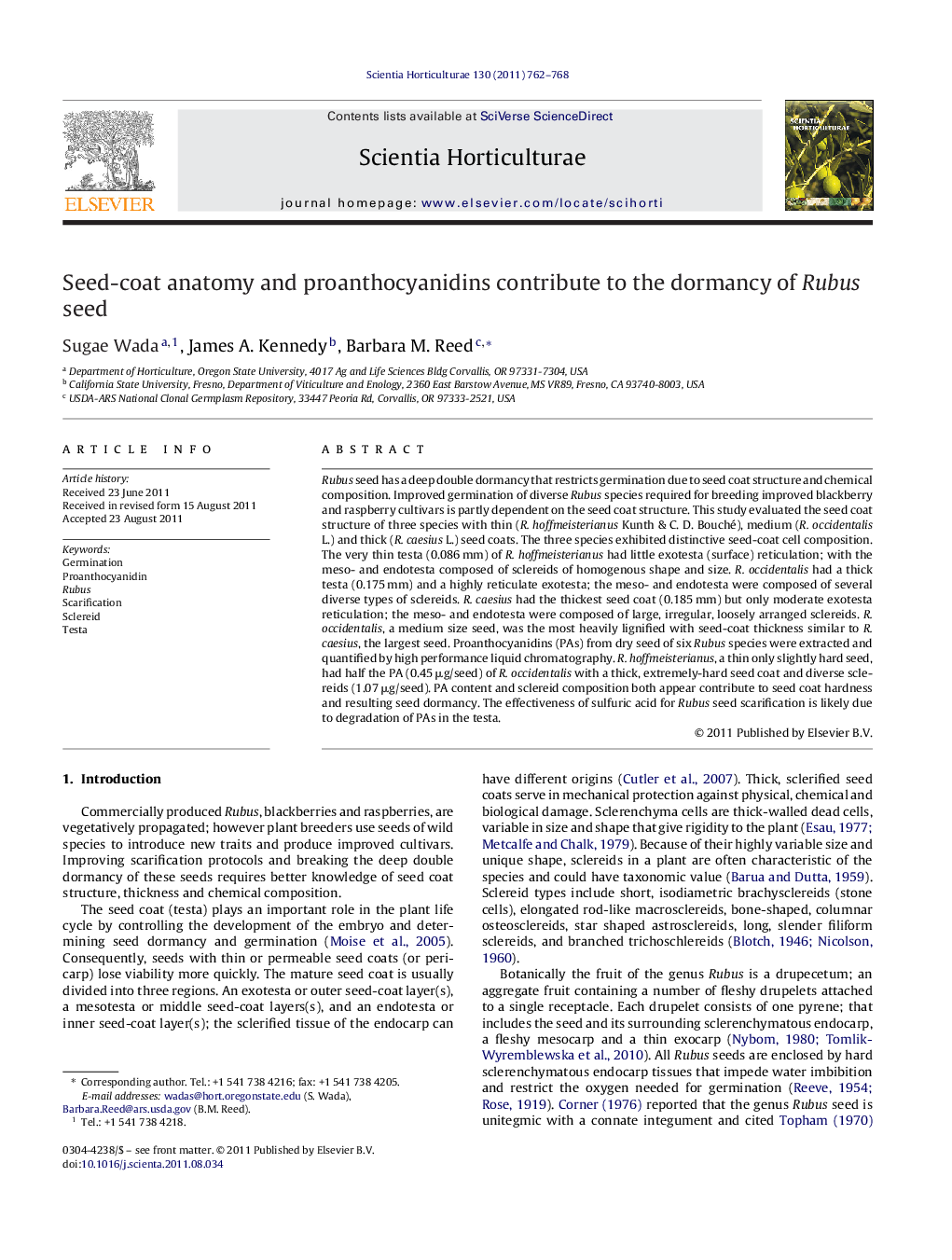| Article ID | Journal | Published Year | Pages | File Type |
|---|---|---|---|---|
| 4567884 | Scientia Horticulturae | 2011 | 7 Pages |
Rubus seed has a deep double dormancy that restricts germination due to seed coat structure and chemical composition. Improved germination of diverse Rubus species required for breeding improved blackberry and raspberry cultivars is partly dependent on the seed coat structure. This study evaluated the seed coat structure of three species with thin (R. hoffmeisterianus Kunth & C. D. Bouché), medium (R. occidentalis L.) and thick (R. caesius L.) seed coats. The three species exhibited distinctive seed-coat cell composition. The very thin testa (0.086 mm) of R. hoffmeisterianus had little exotesta (surface) reticulation; with the meso- and endotesta composed of sclereids of homogenous shape and size. R. occidentalis had a thick testa (0.175 mm) and a highly reticulate exotesta; the meso- and endotesta were composed of several diverse types of sclereids. R. caesius had the thickest seed coat (0.185 mm) but only moderate exotesta reticulation; the meso- and endotesta were composed of large, irregular, loosely arranged sclereids. R. occidentalis, a medium size seed, was the most heavily lignified with seed-coat thickness similar to R. caesius, the largest seed. Proanthocyanidins (PAs) from dry seed of six Rubus species were extracted and quantified by high performance liquid chromatography. R. hoffmeisterianus, a thin only slightly hard seed, had half the PA (0.45 μg/seed) of R. occidentalis with a thick, extremely-hard seed coat and diverse sclereids (1.07 μg/seed). PA content and sclereid composition both appear contribute to seed coat hardness and resulting seed dormancy. The effectiveness of sulfuric acid for Rubus seed scarification is likely due to degradation of PAs in the testa.
Graphical abstractFigure optionsDownload full-size imageDownload as PowerPoint slideHighlights► Internal and external seed-coat structure varies among Rubus species. ► Sclereid organization was unique in the exo-, meso- and endotesta layers. ► Seed-coat structure corresponded to the response to scarification and germination. ► Thick, lignified seed coats were the most resistant to scarification/germination. ► Proanthocyanidin content appeared related to seed hardness of the six species.
